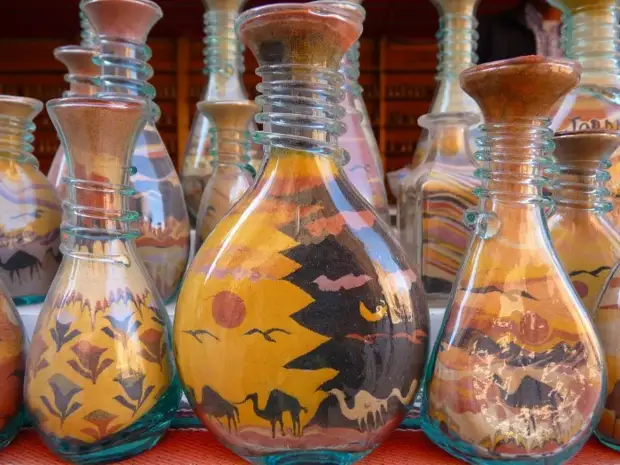
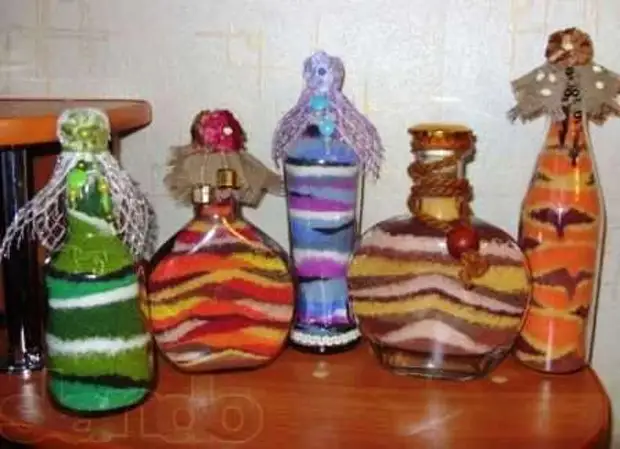
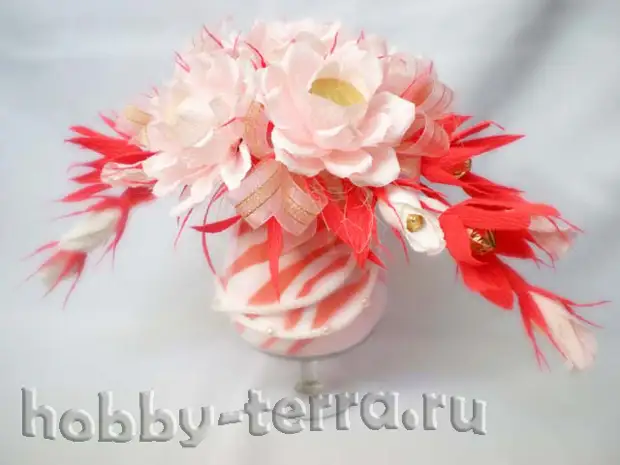
Glass tanks and> Vases various shapes filled Multicolored filler , look very interesting and decorative. Often such vessels can be found among the range of goods in the Vggazines offering Objects for home interior decoration . But they can be used orina. If you are interested in the types of needlework, like the manufacture of candy bouquets, ispolymer clay flowers or fabric, then glass containers with Color Solua They will become an excellent basis for the unusual, designer decisions in such compositions.
Make such a filler at home and decorate a vase or a bottle with your own hands It will not be made up and will not require much time and money.
Materials will be needed: Salt brand "Extra", water, watercolor paint or gouache.
To start in a small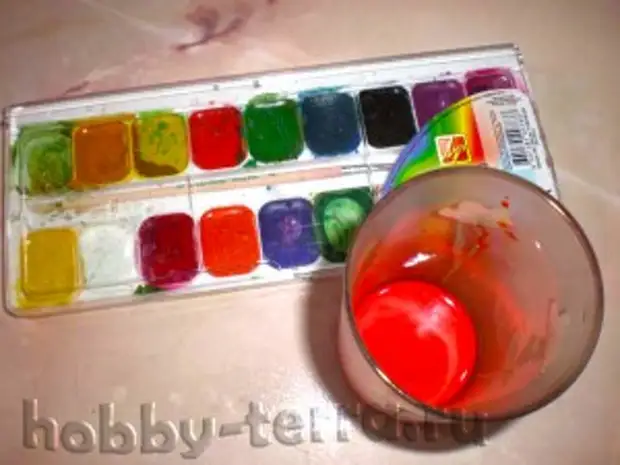
Salt thoroughly mix until all grains are painted. It is more convenient to make a fork.
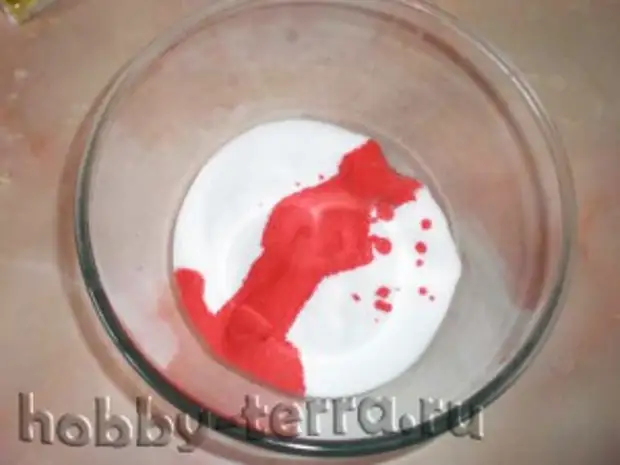
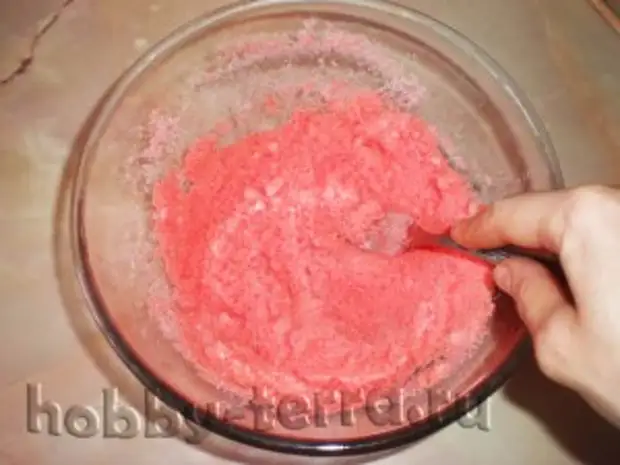
Thereafter Painted salt It must be dried. This can be done naturally, but then the pussy will leave 1-2 days. Much will be much faster if you use the microwave. For example 1 kilogram of salt you need only 5-6 minutes! Just do not forget to sollete it every minute to avoid the formation of large ordinary lumps.
After drying salt must be sifted in a small sieve . Then it will become really very loose, homogeneous and crumbly. In this way, you can make one or more shades for filling.
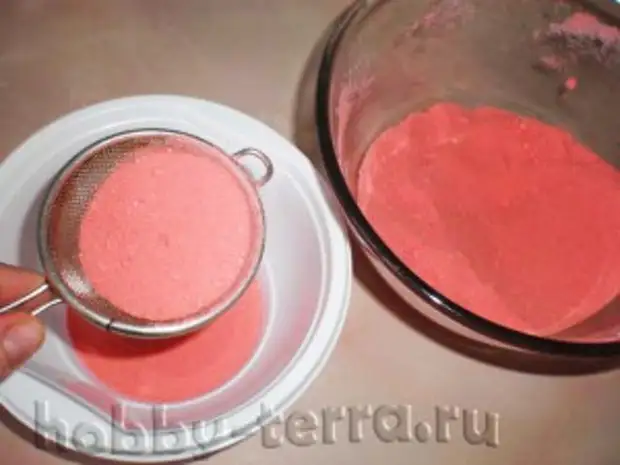
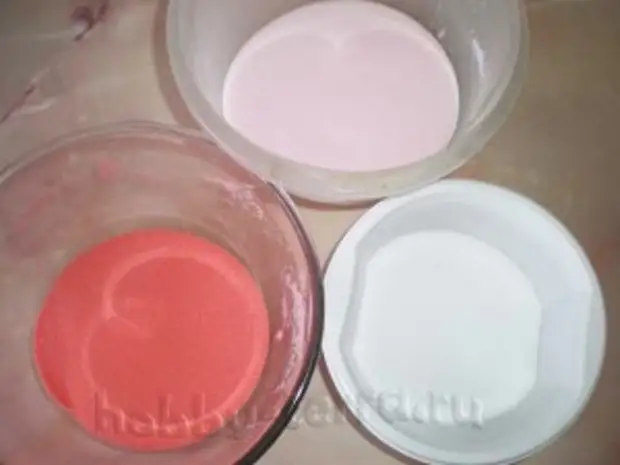
Pour salt, alternating colors, can be different patterns (waves, dunes, diagonal or corrugated stripes, with subkear and drops) with a paper funnel. To get squeaks and waves, just tilt the vessel in the direction you need. Try different options - this is a very interesting is the factory process!
One important point! Before use, glass containers must be carefully dried very well. Otherwise, small particles of dust or fingerprints on the inside of the glass is spoil all your work.
Another advice! In order to avoid the wake of salt, the vessel must be procured.
If it originally does not have a lid or cork, then it can be made independently. For this, a small piece of polyplex is used. From it, cut out the sharp knife in the form in the form of a circularity radius more than the neck of a glass container by 0.5 cm. Also on the billet with a knife we make a non-microicular incision with the same radius as the neck itself. Next, we make a transverse cut in the side of the surround circle. Excess penplex remove. The plug turns out a "step".
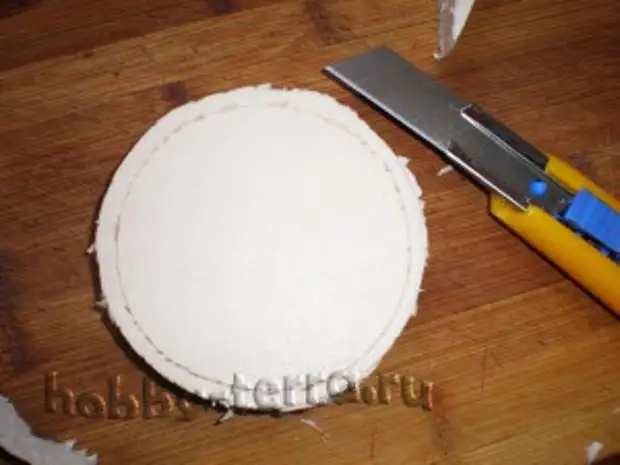
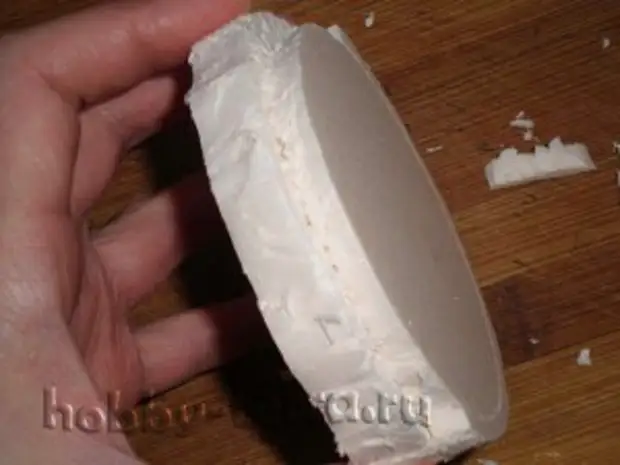
Now the upper (wider) part of the cork is processed by a rigid saw or sandpaper to practice a smooth round shape. We make fitting on the vessel - the plug must come in sufficiently tight, but the glass without unnecessary effort so that the glass is not cracked.
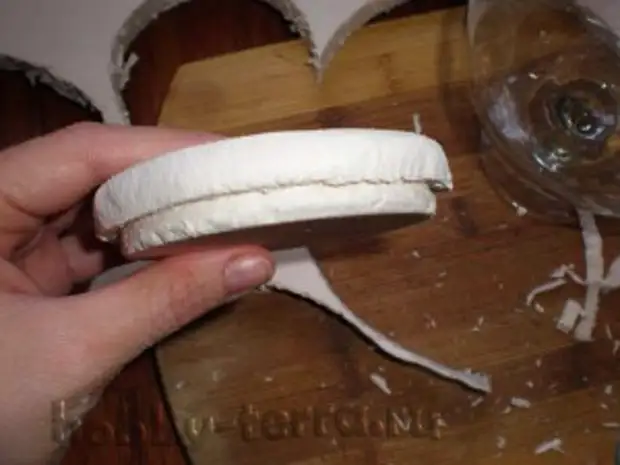
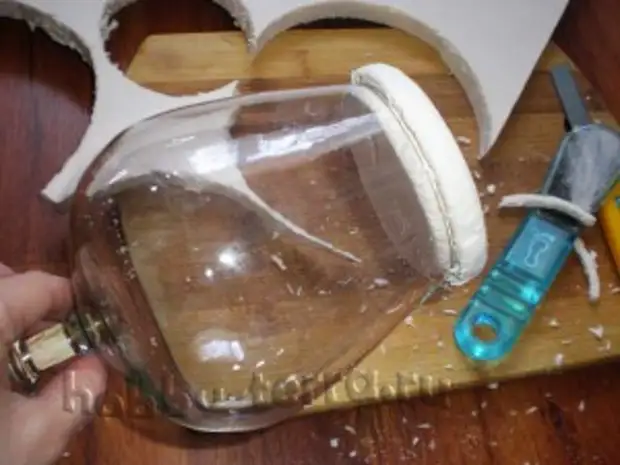
If everything is fine, then after filling the tank, the neck of the neck is clocked with a plug. To reliably construct the edge, the neck can be pre-cooled with glue.
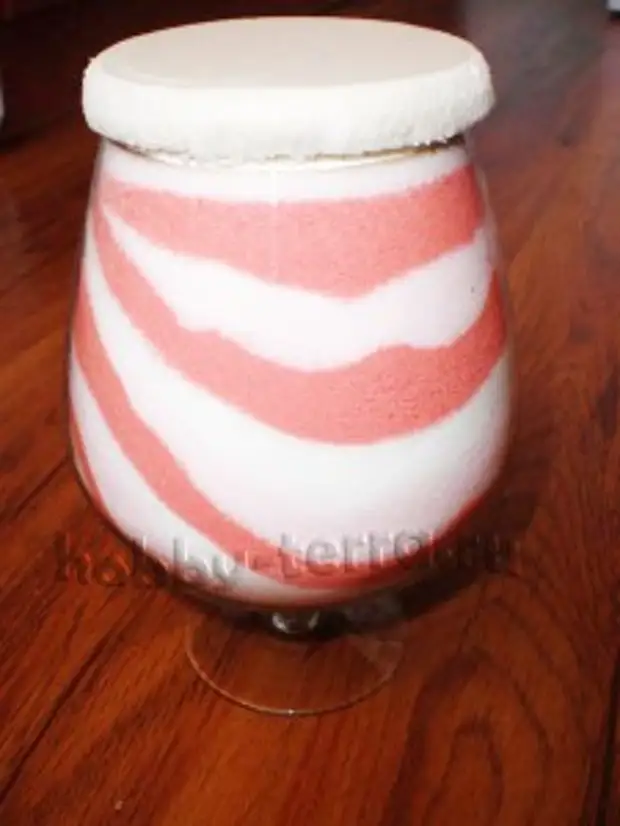
After that, depending on the direction of use, the vessel with salt can be additionally decorated or simply covered with a canvas and wrapped with a ribbon or twine.
Successful and productive creativity!
A source
